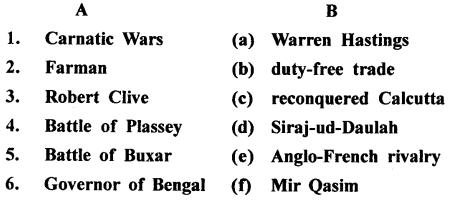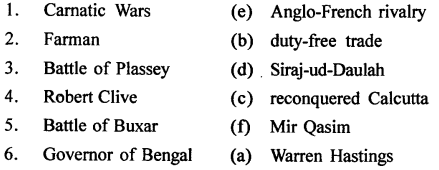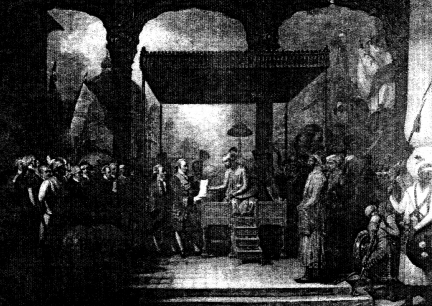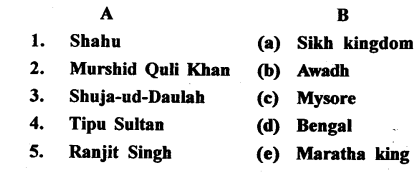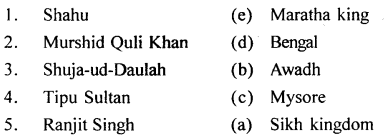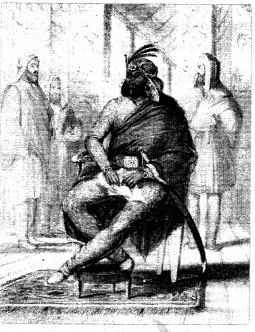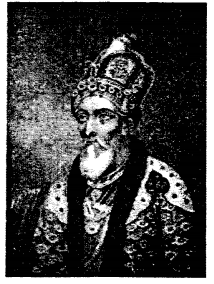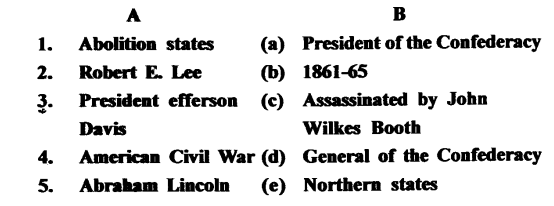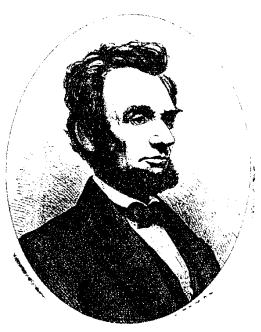The Trail History and Civics for Class 8 ICSE Solutions – Expansion of British Power in India
ICSE SolutionsSelina ICSE SolutionsML Aggarwal Solutions
The Trail History and Civics for Class 8 ICSE Answers
Trail HistoryCivics Focus on HistoryCivics GeographyBiologyChemistryPhysicsMaths
EXERCISES
A. Fill the in the blanks:
- The five centres of Maratha power were:
Answer:
The five centres of Maratha power were:- The Sindhias of Gwalior
- The Holkars of Indore
- The Bhonsle family of Nagpur
- The Gaekwad family of Baroda
The Peshwa of Poona (Pune)
- The Govemors-General during the First and Second Anglo- Maratha Wars were Warren Hastings and Lord Wellesley, respectively.
- The Second Anglo-Maratha War was a severe blow to the Sindhia and Bhonsle of the Marathas.
- Lord Dalhousie adopted three methods to make the British the paramount power in India.
- Jhansi was annexed by Dalhousie on the basis of the Doctrine of Lapse.
- Dalhousie annexed Awadh on the grounds of Maladministration or Misgovernment.
B. Match the following:
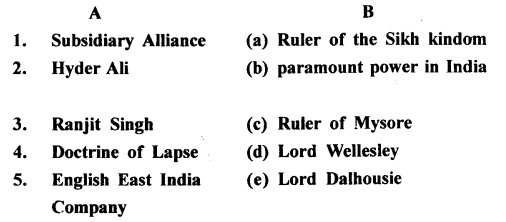
Answer:
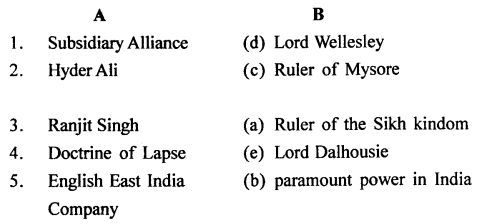
C. Choose the correct answer:
1. The First Anglo-Maratha War was fought during the Governor-Generalship of Lord Cornwallis/Lord Wellesley/ Warren Hastings.
Ans. The First Anglo-Maratha War was fought during the Governor- Generalship of Warren Hastings.
2. The Maratha chiefs were united under the leadership of Nana Phadnavis/Baji Rao ll/Madhav Rao II during the First Anglo-Maratha War.
Ans. The Maratha chiefs were united under the leadership of NanaPhadnavis during the First Anglo-Maratha War.
3. After the Third Anglo-Maratha War the British placed a descendant of Shivaji on the throne of Nagpur/Satara/Jhansi.
Ans. After the Third Anglo-Maratha War the British placed a descendant of Shivaji on the throne of Satara.
4. Punjab was annexed by Lord Minto/Lord Dalhousie/Lord Wellesley in 1849.
Ans. Punjab was annexed by Lord Dalhousie in 1849.
5. The widespread resentment against annexations expressed itself in the Revolt of 1849/1861/1857.
Ans. The widespread resentment against annexations expressed itself in the Revolt of 1857.
D. State whether the following are true or false:
- 1. After Hyder Ali’s death, his son Tipu Sultan continued the Anglo-Maratha Wars.
True. - The Subsidiary Alliance system was used by the British to bring Indian rulers under British control without any war.
True. - The Subsidiary Alliance proved very advantageous for the Indians.
False.
Correct : The Subsidiary Alliance proved very advantageous for the British. - The adopted son of Peshwa Baji Rao II was denied the pension that his father used to get from the British.
True. - By 1856, the English East India Company had brought the whole of India under its control.
True.
E. Answer the following questions in one or two words/ sentences:
Question 1.
What was the main objective of the Subsidiary Alliance system?
Answer:
The subsidiary Alliance system was a method perfected by Lord Wellesley to subjugate Indian powers without the cost and bother/ trouble of war.
Any Indian ruler whose security was threatened was encouraged to seek help from and enter into an alliance with the British, who promised to protect the ruler from external attacks and internal revolts. The Indian ruler had to accept certain terms and conditions.
Question 2.
What happened when the administration of a subsidiary state collapsed?
Answer:
When the administration collapsed, the British used it as an excuse for annexing the kingdom on grounds of misgovernment.
Question 3.
Why did Peshwa Baji Rao II sign the Subsidiary Alliance?
Answer:
In 1802, Peshwa baji Rao II, supported by Sindhia, was defeated by Holkar. Baji Rao II fled to Bassein where he signed the Subsidiary Treaty as a price for British protection and support. He was escorted back to Poona by British soldiers.
Question 4.
Why was Wellesley recalled from India during the Second Anglo-Maratha War?
Answer:
Wellesley was recalled from India because the government in England was unhappy with the enormous expenditure involved in Wellesley’s policy of wars and expansion.
Question 5.
How did the Subsidiary Alliance impact the (a) economy (b) administration in Awadh?
Answer:
(a)
Awadh had signed a Subsidiary Alliance with Wellesley. He had to protect the nawab from external invasions and internal rebellions. It made the nawabs complacent and unconcerned about the affairs of the state. The payement of annual subsidies to the Company exhausted the state treasury.
(b)
When the administration was on the verge of collapse, Dalhousie struck. He brought charges of misgovernment or maladministration against the nawab. On those grounds he deposed the nawab and annexed Awadh in 1856.
F. Answer the following questions briefly:
Question 1.
With reference to the Subsidiary Alliance System perfected by Lord Wellesley, answer the following:
(a) Why did Indian rulers sign the Subsidiary Alliance? State two important military terms and conditions imposed on the Indian rulers by this treaty.
(b) The Subsidiary Alliance proved very beneficial for the British. Explain.
(c) Discuss the disastrous effects of the Subsidiary Alliance on the Indian states.
Answer:
(a)
Indian ruler whose security was threatened was encouraged to seek help from and enter into an alliance with the British, who promised to protect the ruler from external attacks and internal revolts. The Indian rulers had to accept certain terms and condition in return for British protection under the Subsidiary Alliance like:
- British troops would be permanently placed in the territory of the Subsidiary state.
- The ruler would have to pay for the maintenance of the troops.
- He could not employ any europeans in his service or dismiss those who were already there.
- He could not form an alliance with any other power or declare war against any power without the permission of the British.
- He would acknowledge the British Company as the paramount power.
(b)
The Subsidiary Alliance proved very advantageous for the British like.
- The British maintained large armies at the expense of the Indian rulers.
- The British acquired valuable territories as subsidiary payment. This led to the expansion of the British empire in India and an increase in its resources.
- The influence of European rivals, especially the French, was excluded from the courts of the Indian rulers.
- The British controlled the foreign policy of the Subsidiary states.
(c)
The Subsidiary Alliance System had great effect on the subsidiary state like:
- British troops would be permanently placed in the territory of the Subsidiary state.
- The ruler would have to pay for the maintenance of the troops.
- He could not employ any Europeans in his service or dismiss those who were already there.
- He could not form an alliance with any other power or declare war against any power without the permission of the British.
- He would acknowledge the British Company as the paramount power. ses or dastaks for the free movement of their goods.
Question 2.
Dalhousie was a great expansionist and adopted a number of methods to build an all-India empire. In this context, answer the following questions:
(a) Mention the various methods adopted by Dalhousie and the territories annexed on the basis of these methods.
(b) Under what circumstances did a subordinate state automatically ‘lapse’ and pass into the hands of the British? How did the rulers react to this policy?
(c) Why did Nana Saheb become one of the leaders of the Revolt of 1857?
Answer:
(a)
Dalhousie adopted a number of methods to give the final touches to the work of empire-building in India. The methods he adopted were:
- War-Punjab.
- Doctrine of Lapse-Satara, Jhansi and Nagpur.
- Annexation on grounds of maladministration-Awadh.
(b)
Lord Dalhousie brought several subordinate states under the direct rule of the Company by annexing them on the basis of the Doctrine of Lapse. According to the Doctrine of Lapse, all subordinate states (subsidiary states and states created by the British) where the rulers died without a natural male heir would automatically ‘lapse’, i.e., pass into the hands of the British. Rulers without heirs could not adopt sons, according to the age-old Hindu and Islamic traditions, without the permission of the Company.
(c)
Nana Saheb, the adopted son of Peshwa Baji Rao II, inherited his father’s personal property but was not given the pension that had been paid to his father. Nana Saheb became one of the important leaders of the Revolt of 1857.
Question 3.
With reference to the annexation of Awadh discuss:
(a) The effects of the Subsidiary Alliance on the administration in Awadh
(b) The political scenario in India by 1856
(c) Any three factors responsible for the success of the British over their Indian rivals
Answer:
(a)
Awadh had signed Subsidiary Alliance with Wellesley. He had to protect the nawab from external invasions and internal rebellions. It made the nawabs complacent and unconcerned about the affairs of the state. The payement of annual subsidies to the Company exhausted the state treasury. When the administration was on the verge of collapse, Dalhousie struck. He brought charges of misgovernment or maladministration against the nawab. On these grounds he deposed the nawab and annexed Awadh in 1856.
(b)
By 1856 the English East India Company had brought the whole of India under its control of the British. The British had eliminated all their rivals and established themselves as the paramount power in India.
(c)
The factors responsible for the success of the British are:
- Lack of unity among Indian rulers.
- Lack of organized and efficient administration in Indian states.
- Superior military resources of the company.
- Superior economic resources of the company.
- Naval supremacy of the British.
G Picture study:
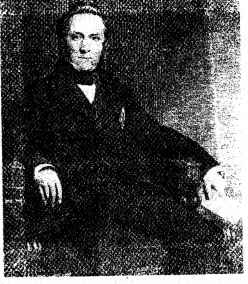
1. Name the Governor Genera!.
Ans. Lord Dalhousie
2. What was the method adopted by him to subjugate the Indian territories ?
Ans. Governor General Dalhousie was a great imperialist who annexed several states on the basis of the Doctrine of Lapse.
3. Mention the terms and conditions under this method.
Ans. According to the Doctrine of Lapse, all subordinate states (subsidiary states and states created by the British) where the rulers died without a natural male heir would automatically ‘lapse’, i.e. pass into the hands of the British. Rulers without heirs could not adopt sons, according to the age-old Hindu and Islamic traditions, without the permission of the Company.
4. Did this method have any advantage for the Indian rulers? Why ?
Ans. The annexation of these states caused widespread resentment among the Indian rulers and became a potent factor responsible for the outbreak of the Revolt of 1857
